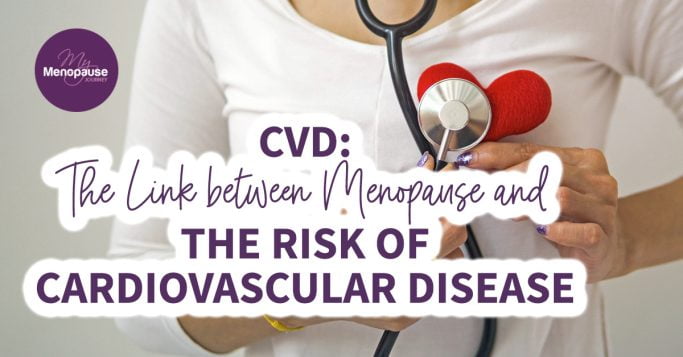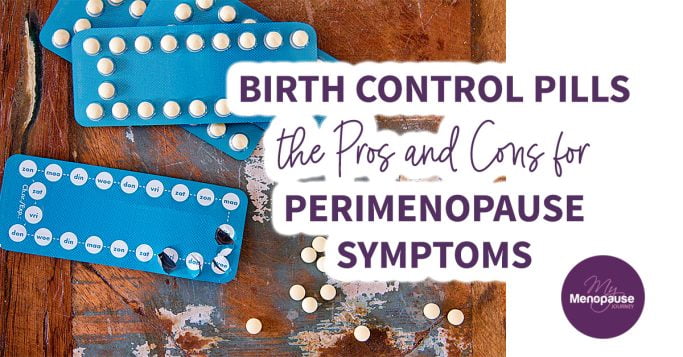It is a fact that women from all over the world who live long enough will eventually reach the stage of menopause, meaning the end of fertility. Though the said phenomenon is universal and the root of occurrence is the same (which is a change of hormonal balance), cross-cultural studies show that women’s experience in the menopausal stage varies and is actually far from being universal.

Cross-cultural research from all over the world suggested that women from different countries have varying experiences and approaches towards menopause: Symptoms that occur differ per race, range of beliefs about menopause, attitude towards it, and whether or not they will seek treatment vary across cultures. How long menopause will last also varies in different cultures. Comprehension about menopause in different countries and cultures is vital to accurately assist women’s health, quality of life, and well-being.
Symptoms
Research about the varying symptoms of women across the world is one of the most striking discoveries by the experts. Several common symptoms associated with menopause that women experience are, hot flashes and night sweats, vaginal dryness, irregular menstruation, headaches, depression and insomnia. Though these symptoms have a common cause of occurrence, which is the fluctuating levels of estrogen in the body, women at different parts of the world do not uniformly experience all the mentioned signs. Experts say that culture related factors such as diet, lifestyle and climate, affect the different manifestation of symptoms.
Different occurrences of symptoms are seen in such proven cases like with Japanese women who experience headaches, muscle stiffness and chills; Nigerian women complain about joint aches most of their menopausal phase; Filipino women experience headaches first with preceding hot flashes; while only a few Indian women complain about symptoms they experience during menopausal period. Mayan women noticed menstrual irregularities as they approach menopause, and Lebanese women said they experience fatigue and irritability.
Hot Flashes
Hot flashes is the most common complaint of all menopausal women. This abrupt episode of intense heat that is mostly felt in the upper part of the body, reddens the skin and produces excessive sweat is almost a universal symptom in menopausal women. But several studies show that cases of hot flashes vary in different race and ethnicity.
Based on the findings of Study of Women’s Health Across the Nation (SWAN) on multiethnic and racial studies, prevalence of hot flashes and night sweats is lowest among women in Japan (18%) and China (21%); and highest on Hispanic (35%) and African-American women (46%). Leading factors of these differences lie in varying lifestyles of different races such as food, physical activity, climate and women’s responsibilities.
For instance, research assumes that lesser episodes of hot flashes in Japanese women are due to their diet and cuisine mostly include soy. Soy is a rich source of phytoestrogens, which is said to ameliorate hot flashes and many other menopausal symptoms.
Lifestyle
Different standard diet between Asian food and American food is also one point to consider for the varying signs. Asian diet adheres to different flavors each meal to provide nourishment for the kidney of all ages and sexes, while the American diet does not. Preferring healthy foods with different flavors and nutrients replenish the energy of kidney, which may help us get through the menopausal phase more easily.
Daily physical activities, which affect women’s weight, also lead to different experiences in menopause as women’s weight and body mass index influence the sex hormones responsible for the indications of menopausal signs. Healthier and fitter body could help ease the symptoms associated with menopause.
Attitude and Expectations Toward Menopause
Women from all over the world also have varying attitudes, views and expectations about menopause. Some find it positive, while others view it as a negative transition. Most non-Western cultures view the arrival of the menopausal period as a relief where women will have fewer restrictions, prohibitions and responsibilities. Just like some women in India, as one of the countries that forbid women to show sexuality in public, the end of menstruation gives them the freedom to go out in public and do several things that are usually prohibited to women.
Mayan women also have a positive outlook on menopause. In Mayan culture, women are obligated to marry young; hence, most of their fertile lives are pregnant or lactating because they don’t practice birth control. The menopausal phase relieves Mayan women from stresses and hassles accompanied by pregnancy. Mayan women are also said to have better sexual relationships with their partners after menopause as fear of pregnancy is already eliminated. While in Papago culture, the notion about menopause is very little or even none to the extent of they have no words or terms specified for menopause.
In some Western cultures, where women are valued through sexual attractiveness, aging is sometimes negatively viewed. Sexual attractiveness is believed to deplete as aging approaches, and with aging, menopause arrives. Negative notions are pointed out to aging as a whole and not only pertained to menopausal women themselves.
Stereotypical beliefs suggest that women find menopause negatively, but women are actually optimistic regarding menopause based on research and statistics. Older women see menopause as the relief from monthly menstruation accompanied by menstrual cramps, fear of unwanted pregnancy and purchasing of feminine products. Studies showed that notions of women regarding menopause differ as they experience it themselves. Researches state that postmenopausal women acquire positive views on menopause rather than premenopausal women.
Approach to Menopause in Different Cultures
Battling with the signs of menopause also varies in different countries. There is a vast list of alternative ways women choose to get through the menopausal symptoms easier. Most of these ways are by using natural herbs and supplements rather than seeking help from the doctors and consuming prescription medicines.
Asia
Asian women are known to have lesser symptoms in their peri-menopausal period, particularly hot flashes. Statistics proved that only a few Asian women are bothered with night sweats and hot flashes. Some studies show that it is because of their diet that is most of the time included soy, which is known to be a rich source of phytoestrogens that ameliorates hot flashes. But according to Traditional Chinese Medicine theory, the initiation of menopausal symptoms is due to a deficiency in “kidney yin”. The imbalance in the kidney yin results in night sweats and hot flashes. Hence, the solution is to successfully balance kidney yin and kidney yang to eradicate the uncomfortable signs of menopause. To keep its balance nourishing the body with healthy food, a balanced diet and natural supplements is essential. Chinese doctors have been following the same theory for thousands of years, and the results are so far constantly exceptional. One native herb that Asian women use to fight the symptoms of menopause is called “Dong quai.”
Dong quai or Chinese Angelica in English terminologies is also known as “female ginseng.” It is one of the most used herbs in treating the signs of menopause. It contains phytoestrogens that binds in the estrogen receptors of our body that consequently increases the estrogen hormones. The increased level of estrogen hormones vanquishes several menopausal symptoms such as hot flashes and vaginal dryness. Dong quai is also a mild sedative that will help reduce mood swings and stress.
South America
Women in South America also have several herbal alternative cures for symptoms of menopause. One distinctive and known natural supplement caught the limelight and the attention of the indigenous people, even the Spanish, which is still used up to now as a weapon against the symptoms of menopause and as an aphrodisiac.
Maca root, a radish looking herb is said to be an excellent alternative cure that greatly reduces the intensity of menopausal symptoms. Though the Maca root does not contain any estrogens, it has an abundant amount of adaptogen that balances the hormones of our body. Because of its responsibility, adaptogen encourages the receptor that produces insufficient hormones to generate more until it suffices the needed amount of our body. Adaptogen’s ability to increase and balance the amount of estrogen and progesterone results to lesser episodes of menopausal symptoms. Aside from the Maca root contains adaptogen, it is also rich in calcium, iron, magnesium, zinc, vitamin B, C and E.
Maca root is proven to lessen episodes of hot flashes, night sweating and vaginal dryness. Also, due to its aphrodisiac abilities, Maca root increases the libido or sexual drive, which is another problem during the menopausal period.
Maca root is available in capsule dosage forms. The recommended dosage is three times daily to consume 900mg, preferably with food. Maca root can also be boiled and taken as tea.
North America
Black cohosh is a flowering plant that is found in North-Eastern America. This plant is known and widely used by menopausal women to eradicate episodes of hot flashes. It contains phytoestrogens, specifically isoflavones that adheres to estrogen receptors, thus intensifying estrogen hormones’ production. The increased levels of estrogens regulate the body temperature hence diminishing the episodes of hot flashes and night sweating. Black cohosh directly affects the hypothalamus, the part of our brain that regulates the body temperature, making it an effective cure for the occurrence of hot flashes. In fact, a recent study proved that 80% of the menopausal women who use the plant exhibited significant results of improvement. Aside from hot flashes and night sweats, black cohosh also proved to be effective in the lubrication of vagina, treatment to anxiety, depression, palpitation (increased heart rate), and strengthens the bones.
Though black cohosh is abundantly available in different dosage forms, it should not be used for more than 6 months. It has several side effects such as stomach upsets and liver inflammation when used more than the mentioned span.
Europe
Also known as cow clover, purple clover and bee bread, red clover is a known plant in Europe that diminish the symptoms of menopause. Red clover is abundant and naturally grows in Europe, which was also introduced to North America. Due to its rich content of phytoestrogens, it increases the production of estrogen in our body that consequences to lesser manifestations of menopausal symptoms. Aside from phytoestrogen, red clovers also hold several essential nutrients that menopausal women need such as calcium, potassium, niacin, magnesium and Vitamin C. This plant also ought to fight osteoporosis, which is as well one of the hideous symptoms of menopause.
One study in the Netherlands demonstrated that 44% of menopausal women who consumed red clover had reduced episodes of hot flashes in just 8 weeks.
Red clover is usually purchased in capsule forms and has a daily recommendation of 400-500 mg.





Gita is the founder of My Menopause Journey. Since 2014, she has been supporting midlife women by sharing hard-earned learnings from her own experience. To advance her knowledge, Gita puts a lot of her time and effort into understanding the broad spectrum of women’s health. She immerses in extensive research about the physical, mental and emotional aspects of menopause. Gita believes in the life-changing power of healthy, holistic living — this is where she anchors her message to all women. Learn more about her marvelous mission in About us - My Menopause Journey.